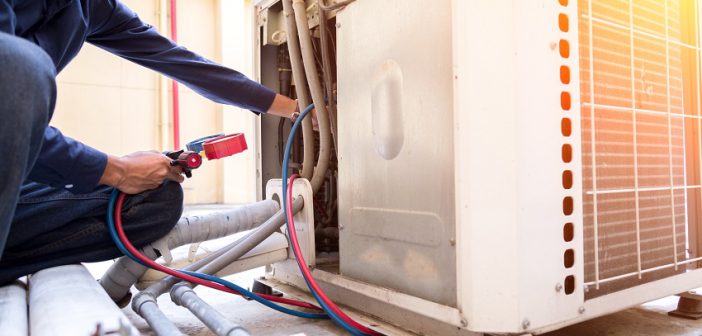When your AC system fails, and you call a technician for air conditioner repair, it might take days for them to show up at your home. If you’re okay with working and fiddling with electricity, then you can try and perform the repair by yourself.
However, if you do decide you want a technician to do it, you can check this https://www.directac123.com/air-conditioner/repair/
What to do in your next AC repair
These tips mostly apply to common AC problems, such as “low cooling” or “no cooling.” If your AC isn’t working as intended, then there are three general things you’d want to do:
- Check your furnace
Ensure that the reason for this malfunction isn’t your furnace. You can check this by setting your thermostat to AC mode and lowering the temperature. The furnace isn’t the problem when the furnace fan starts. But if the fan doesn’t kick in, you can try resetting your furnace circuit breaker. If it still won’t work, then calling in an AC technician might be the right course of action.
Afterward, you can check on your condensing unit outside. Make sure the compressor and fan are running. Otherwise, follow the troubleshooting steps that will be listed below.
- Switch off the power
Before removing the outdoor disconnect or removing the access panel of your condensing unit, make sure to switch off the AC and furnace breakers found in your main electrical panel. You can test if the power has really been switched off by using a voltage tester on the wires coming into the contractor.
- Buy new parts
It’s usually the AC contractor and start/run capacitors that fail. They’re also much cheaper to purchase so buying and installing them right away is a safe bet, especially for AC units that are over five years old. On the other hand, the condenser fan motor also usually fails, but it’s a lot more expensive to buy, so you can hold off on replacing them until you’re completely certain that it’s the culprit behind your AC system malfunctioning.
Step-by-step DIY AC repair
Before starting your DIY repair, ensure you have prepared all the tools you need. This would include a voltage sniffer, a socket set, an inexpensive multimeter, and various insulated screwdrivers.
Here are the eight, more detailed steps you should do for your next air conditioner repair:
- Familiarize yourself with the anatomy of an AC unit
Learning the layout of an AC system is important so you’re more confident with repairing it. An AC system has two main components: an evaporator coil, also called an A-coil, found in your furnace’s plenum and the condensing unit that is found outside your house.
The heat from your house is picked up by the refrigerant found in your A-coil. It then moves the heat to the condensing unit outside your home. The condensing unit then removes the heat by blowing air from the outside through the condensing coil.
- Switch the power off
To do this, pull the disconnect block found in the electrical box that you can find next to your condensing unit. Ensure that the power has been switched off by checking the box’s interior using a voltage sniffer.
- Clean it’s condenser coils
When cleaning the condenser coils of your AC unit, use a garden hose and ensure the nozzle is aimed upward into the top of the condenser coil. This removes any dirt that might have accumulated under the lid.
Work your way around the coil before aiming the nozzle downwards to flush any debris down the coil’s fins. Then, make sure the nozzle is adjusted so it lets out a gentler stream of water and then aim it directly into the coils so you can wash out any debris that might have remained.
- Check the fuses of your unit
Before moving on with the repairs, make sure to test the fuses first. You can typically see two cartridge fuses in disconnect blocks.
To check them, adjust your multimeter, so its Ohms level is at the lowest scale and then touch the black and red leads to each end of both fuses. A numerical reading implies a good fuse, while a reading that shows either a minus symbol, a zero, or an infinity symbol tells you that the fuse of your unit is blown.
If the latter is the case, it indicates that the failing part of your AC system is found inside the condensing unit. You can try replacing the parts, installing new fuses, and then firing up the unit again to fix it. If it doesn’t work, then it’s better to have an AC technician look at it themselves.
- Check the interior of the access panel
You can find the access panel by following the electrical conduit from your house. Make sure the power is off before removing the panel. Don’t forget to keep the access panel retaining crews, so you don’t lose it.
If you find any chewed insulation or broken wires in the access panel, you should ensure the capacitor is discharged first. Afterward, repair the wires and then clean out any rodent’s nest that you might find. If it doesn’t work, then call in a technician.
- Replace the start/run capacitors of your AC system
Before replacing the capacitors, take a picture as you might need it as a later reference. Discharge the energy that has been stored in the old capacitor. Take out needle-nosed pliers for plucking out the wires from the old capacitor one at a time and snapping them to the new capacitor’s corresponding tab.
You can check if it’s tight by wiggling each connector. If it’s still loose, try removing the connector and bending its rounded edges so it fits tighter on the tab.
- Swap out the AC contactor
To replace the AC contactor, pull out a connector from the old contactor and attach it to the same location in the new contactor. If there’s any need to make the connectors fit tighter, then tighten them. You can secure the new contactor in your AC system’s condensing unit.
- Test out your repairs
To see if the repairs you performed were successful, make sure the access panel and disconnect block have been replaced. Turn on the circuit breaker and the furnace before lowering the thermostat temperature.
Wait for your AC to kick in. The compressor should then start running, and the condenser fan should also start spinning.
If it still doesn’t work, it might be better to have a professional look at it.
Conclusion
If your AC system is still malfunctioning even after the repairs you’ve done, then don’t worry. At the very least, you’ve covered the most common failures so the specialist can then focus on the more complicated problems of your AC system.
So, if your DIY repair service wasn’t effective, call in an AC technician right away.





To change out the AC contactor, you must first remove a connection from the old contactor and then reattach it to the octordle identical position on the new contactor. If there is any room for improvement in the way the connectors fit together, feel free to tighten them. You are able to install the replacement contactor in the condensing unit of your air conditioning system.
Good article! Also, don’t forget about filters. Dirty filters may be the cause of unit breakage as well as poor indoor air quality. It’s an important part of work that many homeowners overlook.
Air conditioner is a really good way to get a fresh air.
There are many potential problems that can occur with an air conditioner repair. Some of the most common include leaks, insufficient cooling, and strange noises.
These are some of the best benefits of proper modern heating and cooling systems. They will make your life easier and will also lower your energy bills.